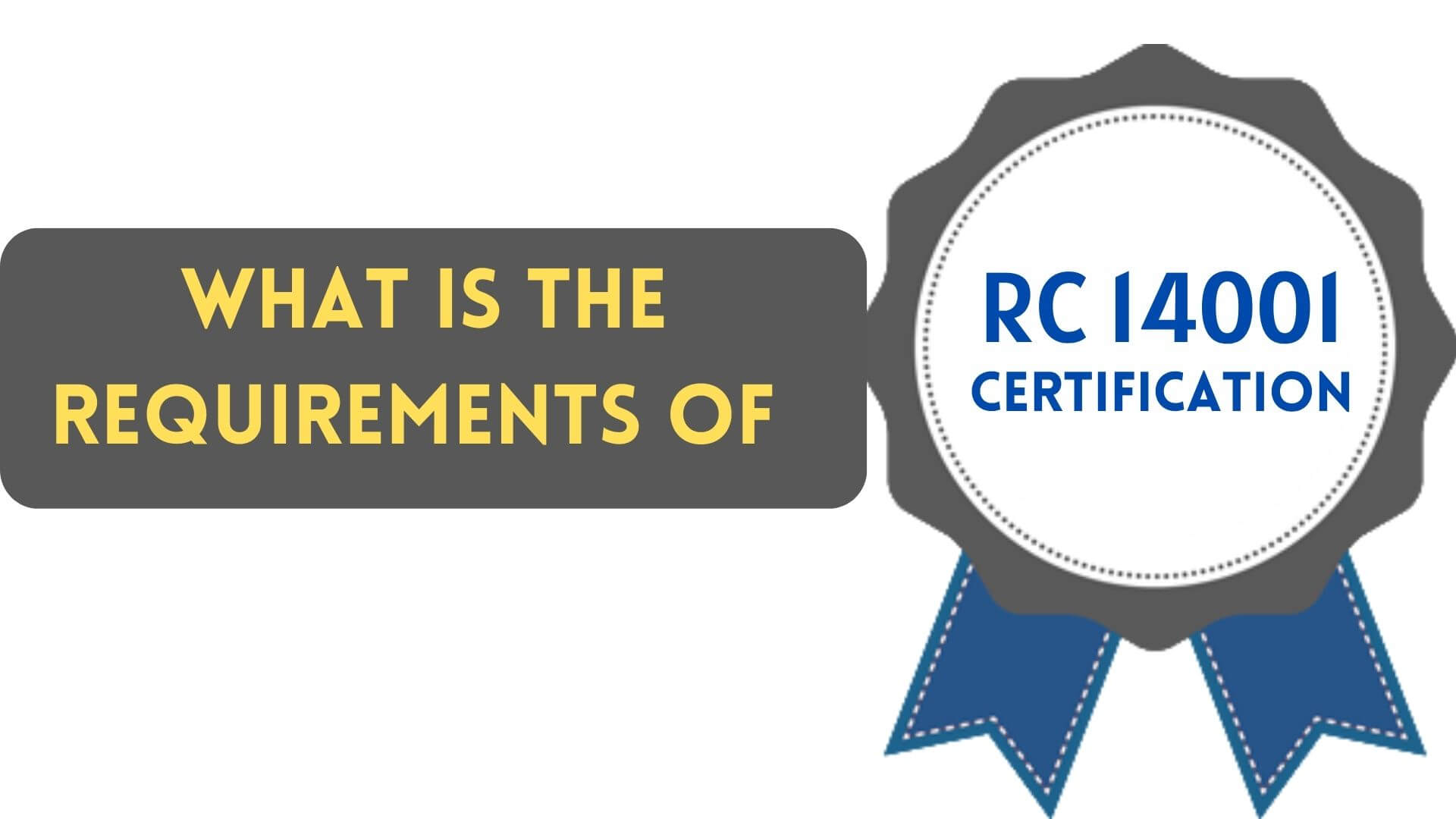Businesses are increasingly aware of the importance of
environmental protection and responsible management. Recognizing this need, the
International Organization for Standardization (ISO) and the American Chemistry
Council (ACC) developed RC 14001, a voluntary international standard that
integrates both the ISO 14001 environmental management system and the
Responsible Care initiative of the ACC. This combination creates a powerful
framework for organizations seeking to achieve sustainable excellence while
safeguarding the environment, health, and safety. In this blog, we will delve
into the requirements of RC 14001 and how it can help businesses embrace
environmental responsibility and achieve operational excellence.
RC 14001
RC 14001 is a technical specification that combines the
requirements of the ISO 14001 environmental management system standard with
those of the Responsible Care initiative. Responsible Care is a voluntary
program of the chemical industry that aims to improve the environmental,
health, safety and security performance of its members and their products.
How RC 14001 builds upon ISO 14001?
RC 14001 enables an organization to demonstrate its
commitment to both environmental protection and social responsibility, as well
as to meet the expectations of its stakeholders and customers. RC 14001 builds
upon ISO 14001 by adding elements such as product stewardship, process safety,
security, emergency preparedness and response, community awareness and outreach,
and distribution. By implementing RC 14001, an organization can benefit from
improved operational efficiency, reduced risks and liabilities, enhanced
reputation and trust, and increased competitiveness and market access.
Process of obtaining RC 14001 Certification
The process of obtaining RC 14001 certification involves the
following steps:
- Conducting a gap analysis to identify the
current status of the organization's environmental management system and the
areas that need improvement to meet the RC 14001 requirements.
- Developing and implementing an action plan to
address the gaps and improve the environmental performance of the organization.
- Conducting an internal audit to verify the
effectiveness and compliance of the environmental management system with RC
14001.
- Selecting a third-party certification body that
is accredited by the American Chemistry Council to perform the RC 14001 audit.
- Undergoing the RC 14001 audit, which consists of
a document review, an on-site assessment, and a verification of corrective
actions.
- Receiving the RC 14001 certificate, which is
valid for three years, subject to annual surveillance audits.
What is the Requirements of RC 14001?
RC 14001 helps organizations to demonstrate their commitment
to environmental supervision, social responsibility, and continuous
improvement. RC 14001 requires organizations to:
- Establish and maintain an environmental policy
that reflects the Responsible Care guiding principles and codes of practice.
- Identify and evaluate the environmental aspects
and impacts of their activities, products, and services.
- Set environmental objectives and targets that
are consistent with their policy and the Responsible Care goals,
- Implement and operate an environmental
management system that covers all the elements of ISO 14001 and the Responsible
Care requirements.
- Monitor and measure their environmental
performance and compliance with legal and other obligations.
- Conduct internal audits and management reviews
to ensure the effectiveness and suitability of their environmental management
system.
- Communicate with stakeholders and report on
their environmental performance and Responsible Care activities.
- Seek external verification and certification of
their environmental management system by an accredited third-party auditor.
Benefits of obtaining RC 14001
The benefits of obtaining RC14001 certification include:
1. Enhanced environmental performance: RC14001 helps
organizations establish a systematic approach to identify and address their
environmental impacts, leading to improved environmental performance and
reduced resource consumption.
2. Improved safety and security: Responsible Care
emphasizes safety and security management, promoting best practices to prevent
accidents, incidents, and potential hazards in the workplace.
3. Regulatory compliance: Adhering to the RC14001
standard assists organizations in meeting and staying compliant with relevant
environmental, health, and safety regulations.
4. Risk management: The integration of ISO 14001 and
Responsible Care allows organizations to identify and manage risks effectively,
reducing the likelihood of incidents that could harm people or the environment.
5. Positive public perception: Obtaining RC14001
certification demonstrates a commitment to sustainability, responsibility, and
safety, enhancing a company's reputation in the eyes of stakeholders,
customers, and the general public.
6. Competitive advantage: RC14001 certification can
provide a competitive edge in the chemical industry, as more customers and
partners seek environmentally responsible and safety-conscious suppliers.
7. Continuous improvement: The RCMS framework
encourages organizations to establish and track environmental objectives,
promoting a culture of continuous improvement in environmental performance.
8. Supply chain benefits: RC14001 certification can
have a positive impact throughout the supply chain, as it encourages
responsible practices and the sharing of best practices among partners.
9. Employee engagement: A focus on safety, health,
and environmental stewardship can foster a culture of responsibility and
engagement among employees, leading to higher productivity and satisfaction.
10. Risk reduction in the long term: By proactively
addressing environmental and safety issues, organizations may reduce the
likelihood of costly incidents and liabilities in the future.
How does RC 14001 incorporate the PDCA cycle into its
requirements?
The requirements of RC 14001 are based on the
Plan-Do-Check-Act (PDCA) cycle, which involves:
1- Planning: Establishing the environmental
policy, objectives, targets, and programs, as well as identifying the legal and
other
requirements applicable to the organization's activities, products, and
services.
2- Doing: Implementing and operating the
environmental management system, including allocating resources, assigning
responsibilities, providing training, communicating, controlling operations,
and managing emergencies.
3- Checking: Monitoring and measuring the
environmental performance, evaluating compliance, conducting audits, and
reviewing
corrective and preventive actions.
4- Acting: Reviewing the environmental
management system at planned intervals, identifying opportunities for improvement,
and
taking actions to achieve them.
Conclusion
RC 14001 is a valuable standard that helps organizations to
integrate environmental, health, safety and security management systems. By
following the RC 14001 requirements, organizations can demonstrate their
commitment to responsible care, improve their performance, reduce their risks,
and enhance their reputation. RC 14001 also enables organizations to comply
with relevant regulations, meet customer expectations and achieve their
sustainability goals. RC 14001 is not only beneficial for the environment and
society, but also for the business success of the organizations that adopt it.
There is also other ISO certification that will benefit your organization; the companies should apply certificate through the leading consultant of ISO Certification in Delhi.

